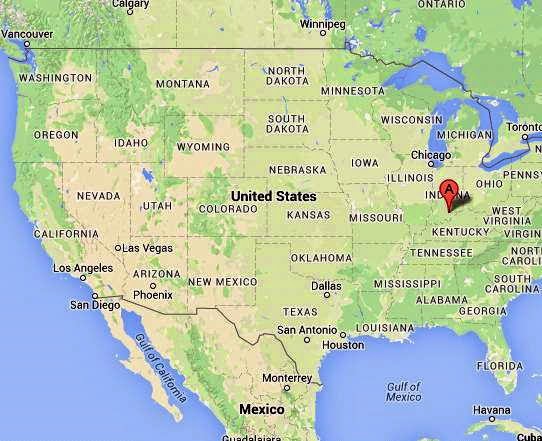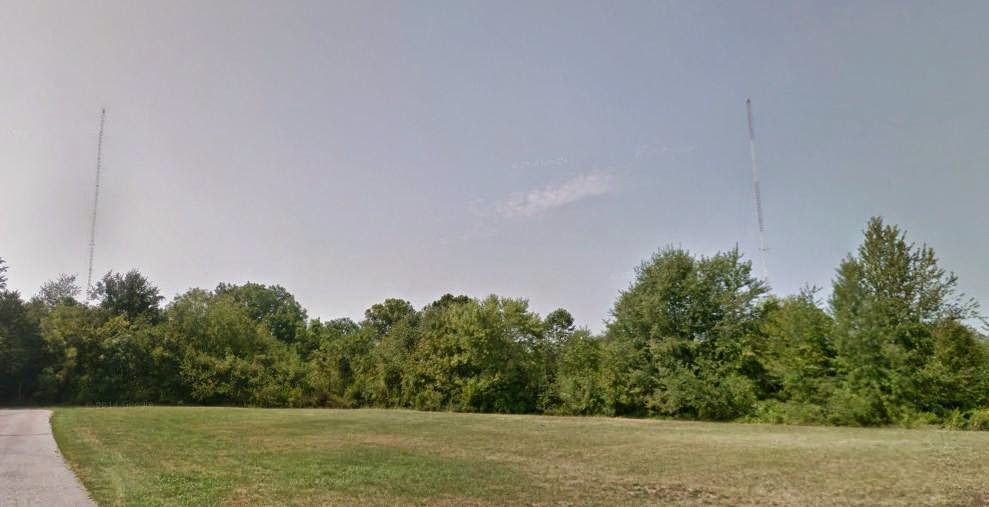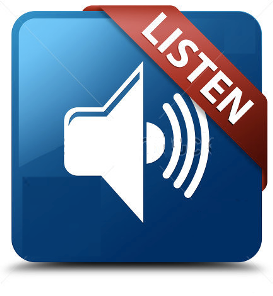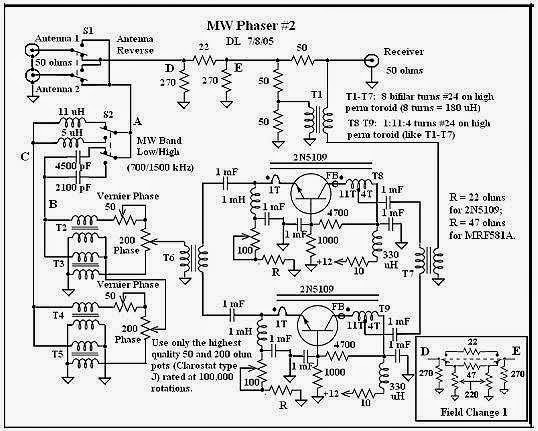Posts Tagged ‘BCB’
 VE7SKA’s New Skywire
VE7SKA’s New Skywire

Mike, VE7SKA, AM/FM DXer from Saltspring Island, a nearby island here in the oceans of south-west BC, has sent me a description of his latest doings. Mike took advantage of the recent warm sunny weather to do some antenna work.
Mike calls his new antenna the SDSS (Super Drooper Sleuther Sloper)! It is 110' long, made of #18 wire and hangs from near the top of his 48' tower, drooping to a low sturdy Fir branch, about 10' high.
Using a section of Belden 9913 that was already on the tower (it used to feed his 6m array), Mike feeds the 'drooper' via a 9:1 balun / matching transformer... with the antenna feeding one leg of the transformer and the other side going to a section of #18 wire dropping straight down and terminated in a small ground system at the base of the tower.
The antenna runs ESE at 112 degrees by WNW at 292 degrees ... the bread and butter direction from SW Canada. For phasing and comparison, Mike uses a much lower wire, 30' long x 7' above ground level, running SE at 140 degrees by 320 degrees NW.
Mike reports: "An immediate test done after launch at 3pm logged a new 10 watt TIS on 1630kHz from just north of Marysville, WA on I-5 freeway. Little daytimer KBRD 680 Lacey, WA with 250 watts wasn't even audible on the Quantum QX Pro v3 amplified loop ... recent MW condx have been favorable ... a sunset tentative of 1460 KLTC N.Dakota (5kW); logging rarity 930 KTKN AK (1kW) on a very busy frequency ... new logging 1580 KKTS WY at 220 watts, phasing out pests KGAL and KMIK."
Mike goes on to say that phasing the new antenna against its smaller and lower little cousin allowed him to log several of the stations noted above, although the lower antenna picks up more noise.
This is really the key to any antenna system and one of the reasons we were always taught to get antennas as high as possible ... to get away from those nasty noise sources in or near the house.
With several antennas to play with now, Mike is looking forward to some interesting work on both the BCB, the beacon band and the lower SW bands but plans to get the antenna up much higher in some of his tall Firs before too long. As well, a high Low Noise Vertical is also on the 'to build' list.
So far the SDSS is proving the old myth wrong ... that antennas put up in anything less than the foulest of weather just don't work.
 Alaskan Morning On The BCB
Alaskan Morning On The BCB
Following the recent good LF propagation to Alaska allowing me to hear several low powered NDBs that I haven't heard since early last fall (shows what a dismal DX winter this has been), I decided to check Saturday morning's Perseus recordings made about 30 minutes before local dawn.
I have previously only logged one station from Alaska on the medium wave band but then again, I don't often look for them.
I was surprised to hear the normal KBOI (Boise) powerhouse on 670KHz replaced by another strong signal ... KDLG in Dillingham. It can still be heard weakly under KDLG's strong signal. Listen as they go from a piano interlude to the ID. I just can't make out the short part before the identification when the announcer says, "this is your ?? radio station ...". It sounds like 'Monday" but this was on Saturday morning.
Next heard was KICY, in Nome, all in the clear on 850KHz with a good identification.
KICY was followed by KAGV in Big Lake, near Anchorage, on 1110KHz. This was a lucky catch as KBND in Bend, Oregon had a huge signal at the time but went open mike just long enough for KAGV to be clearly heard. Listen as the strong KBND signal goes quiet only to start up again at the end of the Alaskan's identification ... perfect timing!
A fourth Alaskan, KVNT in Eagle River, was also logged on 1020KHz... not with an ident but with talk of "Eagle River".
All-in-all, a good morning to the north. As the solar cycle draws lower and lower, this type of reception will only get better over the next few years ... something to look forward to for BCB DXers.
All of these signals were heard at 1400Z using the Perseus SDR and my 70' inverted L resonated at 400KHz.
I have previously only logged one station from Alaska on the medium wave band but then again, I don't often look for them.
I was surprised to hear the normal KBOI (Boise) powerhouse on 670KHz replaced by another strong signal ... KDLG in Dillingham. It can still be heard weakly under KDLG's strong signal. Listen as they go from a piano interlude to the ID. I just can't make out the short part before the identification when the announcer says, "this is your ?? radio station ...". It sounds like 'Monday" but this was on Saturday morning.
Next heard was KICY, in Nome, all in the clear on 850KHz with a good identification.
KICY was followed by KAGV in Big Lake, near Anchorage, on 1110KHz. This was a lucky catch as KBND in Bend, Oregon had a huge signal at the time but went open mike just long enough for KAGV to be clearly heard. Listen as the strong KBND signal goes quiet only to start up again at the end of the Alaskan's identification ... perfect timing!
A fourth Alaskan, KVNT in Eagle River, was also logged on 1020KHz... not with an ident but with talk of "Eagle River".
All-in-all, a good morning to the north. As the solar cycle draws lower and lower, this type of reception will only get better over the next few years ... something to look forward to for BCB DXers.
 |
| courtesy: https://www.google.ca/maps |
 State #29 On The BCB
State #29 On The BCB
Normally, 1660 KHz is dominated here by Spanish format KTIQ in Merced, California. I was surprised to tune past 1660 early on Saturday evening to hear Country & Western music. The top-of-hour ID was "Willie 1660 AM" who turned out to be KQWB in Fargo, North Dakota ... state #29 for me on the broadcast band! Not only was it dominating the frequency with an S9 +10db carrier, there were no other stations to be heard ... not even a whisper of KTIQ, normally heard weakly, even when looping to the east.
Their 5 tower array is evidently doing a good job, when propagation favors the eastern path as the antenna pattern has a strong western component while nulling the east.
"... all country legends. This is a Taylor Swift-free zone, Willie at 1660 AM".
KQWB was logged at 0300Z (7 PM local time) using the 10' x 20' loop and Perseus SDR.
 |
| courtesy: https://www.google.com/maps/ |
Their 5 tower array is evidently doing a good job, when propagation favors the eastern path as the antenna pattern has a strong western component while nulling the east.
 |
| courtesy: http://radio-locator.com |
"... all country legends. This is a Taylor Swift-free zone, Willie at 1660 AM".
KQWB was logged at 0300Z (7 PM local time) using the 10' x 20' loop and Perseus SDR.
 New 530KHz Catch
New 530KHz Catch
 |
| CIAO Antenna courtesy: https://maps.google.ca/ |
In spite of the high K index, the broadcast band was in good shape Friday night, with a nice signal from CIAO in Brampton, Ontario. Like many of the new stations out on the west coast, this is a multi-lingual broadcaster, with most programming in Punjabi or Hindi.
 |
| Courtesy: https://maps.google.ca/ |
It is supposedly limited to 250 watts at night but from the sound of their signal, this regulation may not be being followed ... either that or conditions were even better than I thought.
My recording was made at 0600z (10PM local time) while looping E-W with the 10'x20' loop and the Perseus SDR.
See if you can detect the telephone numbers being given. All have an area code assigned to the Toronto region. As well, there is a second station riding beneath. I suspect one of the Cubans, Radio Reloje or Radio Enciclopedia, both on 530. There also appears to be a top-of-hour short time 'pip' ...either from the Cuban or from CIAO.
Perhaps some more experienced readers can help fill-in the blanks for me.
 Phasers On Medium Wave
Phasers On Medium Wave

A recent posting on the Yahoo ndblist Group page, by veteran LF/MW DXer and front-end guru, Steve Ratzlaff (AA7U) in Oregon, described his thoughts on LF/MW antennas and his experience with phasers:
Some years back at the other place, I experimented with phasers, trying
all the various ones I could find or build. I had a long term loan of
the DXE NCC phaser as well. I compared them mostly at MW where a phaser is generally most useful; but also at LF and HF. In all cases and all
frequencies, without exception, the Dallas Lankford "MW Phaser #2" was
significantly better. I have placed that article in the ndblist Files,
under "Aerials and Technical Files" section should you have an interest
in looking at that article.
For LF use I never found any reason to use a phaser for trying to
optimize the level of a signal. Usually LF signals are short-lived and
often you only have a short time to catch an ident before it fades away.
You can easily waste 30 seconds or more just trying to optimize the
phaser; by that time the signal is usually gone. For those with a local
noise problem from a single general direction a phaser could be useful
in nulling out that noise, though of course you would lose the signals
from that direction too.
I also had room for antenna experiments, being able to compare them with
my longwire antennas. For those with the room, I believe it's hard to
beat an elevated longwire of approx. 400 feet or longer. I was very
fortunate to be able to string two E/W 1600 foot longwires, on either
side of the property about 400 feet apart and roughly parallel; and a
much shorter 400 foot N/S longwire. But even the N/S short one enabled
me to log a number of Greenland beacons (of course this was back when LF
conditions were still excellent, not like now).
Some folks have good results with the K9AY type antenna--Doug in TX has
good results using that antenna. But it's a ground-dependent antenna and
many areas don't have ground characteristics that support such antennas.
My area was one of those--the K9AY never worked very well for me. But an
elevated vertical loop worked very well, using the Wellbrook ALA100
preamp.
I had several rectangular loops up at one time, 120-150 foot
circumference using the ALA100, about 10 vertical feet distance between
the top and bottom wires to give a good capture area. These were very
sensitive at LF and a couple of times I was able to (barely) hear
distant South Pacific beacons that I was also hearing on the 1600 E/W
longwire. And of course the loop antenna is ground-independent so can be
used anywhere. It's bidirectional so can help in nulling noise too. And
such a loop doesn't take up much room as long as you can get it away
from local AC noise (which is true for all LF antennas, especially for
active whips).
Mark Connelly is a prominent east coast MW DXer and has a lot of info on
antennas and phasing on his webpage here. All his applications are primarily for MW DXing but the principles apply equally
well to LF.
The Dallas Lankford phaser article described by Steve, can also be downloaded from here.
LNV phaser, John Bellini in Colorado, also chimed-in with some additional thoughts based upon his own experience:
You do (ideally) need to have good antenna separation to have good/easy phasing of the two signals but you do not have to have two different antennas. If the antennas are too close, the noise fields can be too similar and you won't get good noise cancellation or if the antennas are too close the wavelengths of the signals compared to the antenna separation will be long and it will be a challenge to phase out a signal.
I have been using three, nearly identical, LNV antennas separated 85-110 ft, depending on which pair I use, and have had very good results using the Quantum Phaser.
A very informative discussion of backyard antennas (and phasers) suitable for LW/MWwork is described by Graham Maynard in this Medium Wave Circle article. In the author's own description:
Well, once again I say "That's it". This time my mind churning effort has been to understand and develop the results possible with simple, small back-garden, mixed loop-vertical antenna systems. It really is not as complicated as might first appear, and those willing to try could enjoy as I do, listening to other people's locals ··· Ontario ·· New York ···
These pages have been long in writing - they summarise many years of enquiring study and thoughtful co-ordination with determined and diligent empiric effort...
There's enough good bedtime reading for an evening or two here!
 More Low Noise Vertical Info
More Low Noise Vertical Info
MW DXer, John Bellini in Colorado, has recently posted another interesting set of YouTube videos describing the mechanical construction and operation of his cool, and somewhat stealthy, Low Noise Vertical (LNV) as well as his phaser in action against some IBOC and local blowtorch signals.
His use of the phaser is particulary interesting. Here he demonstrates what two LNV's can do when phased correctly. The second antenna being used is one of his wire LNV's located further back in the yard.
The first video shows phasing against local IBOC crud.
The second video shows the phaser in use to knock down the sideband hash from a strong local (KOA) signal, 25 miles away.
For those that like to DX in real time (unlike those using SDR overnight samplings), the phaser has much to offer.
The one being used in the videos is the Quantum Phaser and more information about it may be found here.
More on phasers next time.
The first video shows phasing against local IBOC crud.
The second video shows the phaser in use to knock down the sideband hash from a strong local (KOA) signal, 25 miles away.
For those that like to DX in real time (unlike those using SDR overnight samplings), the phaser has much to offer.
The one being used in the videos is the Quantum Phaser and more information about it may be found here.
More on phasers next time.
 BCB DX – Two New States
BCB DX – Two New States
With the recent quieting of the geomagnetic field, resulting in K values of 0's and 1's, along with a positive-going DST value, the broadcast band on Wednesday and Thursday night was much more vibrant than it has been in several weeks.
Being located on the eastern shoreline of Mayne Island, the direction towards all of the U.S.A. is over many miles of saltwater, so my main interest is in domestic / U.S.A. DX.
Wednesday evening netted two new states on the BCB ... Kansas and Indiana, for states #27 and #28 respectively, both heard on the Perseus SDR and my 10' x 20' amplified loop.
KWOD, on 1660KHz, identifying as "The Business Channel", was logged during a short top-of-the-hour fade-up at 0600z (10PM local time). Their night power is listed as 1,000 watts while their day power is 10,000 watts.
The transmitter site is located in the middle of a quiet residential district of older homes ... on all four sides.
I shudder to think what RFI problems those living in the adjacent homes must suffer when they are on daytime power!
WSLM, on 1220KHz, was also logged at 0600z, during a two-minute fade-up and in the middle of the local weather report.
Interestingly, the station's night-power is listed as "82 watts", which, judging by the readability of their signal, was not the case. Perhaps the engineer just 'forgot' to switch from their daylight power of 5,000 watts!
Their phased antenna array puts their main lobes, due east and west, so evidently I was catching the northern edge of their pattern.
See what you can hear their during the short recording made of the "Country WSLM" weather report
I have yet to check last night's recordings to see if conditions have held-up for two night's running ... more later if so.
Being located on the eastern shoreline of Mayne Island, the direction towards all of the U.S.A. is over many miles of saltwater, so my main interest is in domestic / U.S.A. DX.
Wednesday evening netted two new states on the BCB ... Kansas and Indiana, for states #27 and #28 respectively, both heard on the Perseus SDR and my 10' x 20' amplified loop.
KWOD, on 1660KHz, identifying as "The Business Channel", was logged during a short top-of-the-hour fade-up at 0600z (10PM local time). Their night power is listed as 1,000 watts while their day power is 10,000 watts.
 |
| KWOD - Kansas courtesy: https://www.google.ca/maps |
 |
| KWOD Towers courtesy https://www.google.ca/maps |
The transmitter site is located in the middle of a quiet residential district of older homes ... on all four sides.
I shudder to think what RFI problems those living in the adjacent homes must suffer when they are on daytime power!
 |
| WSLM - Indiana courtesy :https://www.google.ca/maps |
Their phased antenna array puts their main lobes, due east and west, so evidently I was catching the northern edge of their pattern.
 |
| courtesy: https://www.google.ca/maps |
See what you can hear their during the short recording made of the "Country WSLM" weather report
I have yet to check last night's recordings to see if conditions have held-up for two night's running ... more later if so.

















